Weapons used by 1 Canadian Parachute Battalion
Knives
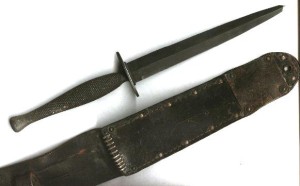
1 Canadian Parachute Battalion’s “Killing Knife”. Made by Camillus for the USMC Raiders. About 15,000 were made, and only about 6,000 were issued to the USMC Raiders. Their version has the maker’s name and USMC in a scroll on the blade. 1 Can Para Bn were issued with an all black and unmarked version. (Colin Stevens’ Collection – This knife was brought home by CPO Byron MacMillan RCNVR who served on board HMCS Prince David. We do not know where he got it, but it was likely off a 1 Can Para Bn member – perhaps in a crap game? It is missing the leg tie down thong, and the belt hanging hook has been removed — it just got in the way for Canadians as it did not fit our gear — The tip has snapped off and has been resharpened. )
I would very much like to know more about the history of these knives and 1 Can Para Bn. and of other surviving examples. They show up in several of the wartime photos. Were they acquired while the Bn was training at Fort Benning? I have heard that there were not enough to go around. They were more brittle than the F-S Fighting Knife, but the scabbard was more secure in my opinion. Frank Mowat carried one and lost it in battle. He then acquired a ringed grip F-S Fighting Knife and carried that in the above type scabbard. Once, when replacing it in a hurry, the blade pierced the back of the scabbard.
[INSERT PHOTO]
LEFT TO RIGHT: 1 Can Para Bn “Killing Knife” (rare unmarked, all black version of USMC Stiletto), made by Camillus Cutlery in USA) with its leather scabbard as issued to 1 Can Para Bn [Note: This is a different specimen from the one shown above]; F-S Fighting Knife (normally ringed grip late war production) as issued to some members of 1 Can Para Bn before D-Day invasion; V-42 Commando Knife (replica shown) made for First Special Service Force (FSSF) – ” The Devil’s Brigade”. This formation included 2 Can Para Bn, and some members of it later served in 1 Can Para Bn. (Colin Stevens’ Collection)
Clasp knife was standard issue for soldiers.
M2 US paratrooper switchblade (issued to those who were jump qualified at Fort Benning). See the story of how one of these knives saved the life of my friend, Pte. Cliff Douglas.
1 Canadian Parachute Battalion convoy, Germany, Spring 1945. Note the motorcyclist is carrying a Sten Mk. V machine carbine (submachine-gun). Jeep on his right is towing an airborne trailer and they are passing an American convoy. Click on ‘thumbnail’ photo to see a larger version. Photo courtesy of Doug Morrison ex-B Coy, then Vickers Platoon, 1 Cdn Para Bn. 1942-45
Rifles
[Picture to come]
Short Magazine Lee Enfield (SMLE) No. 1 Mk. III* – These were used in training, but not in combat although a few modified for grenade launching (“EY”) MIGHT have been used. (.303″)
Lee Enfield No. 4 Mk. I* (.303″) As per rifle below, but without telescope.


M1 Garand (Although the inventor was born in Canada it was not issued to 1 Cdn Para Bn. but at least one member of 1 Can Para Bn carried one. (.30/06). The M1 Garand was briefly issued to Canadian military forces late in WWII and in the mid-1950s.
Pistols
Colt Government Model, M1911 and 1911A1 (.45″) (standard issue throughout war)
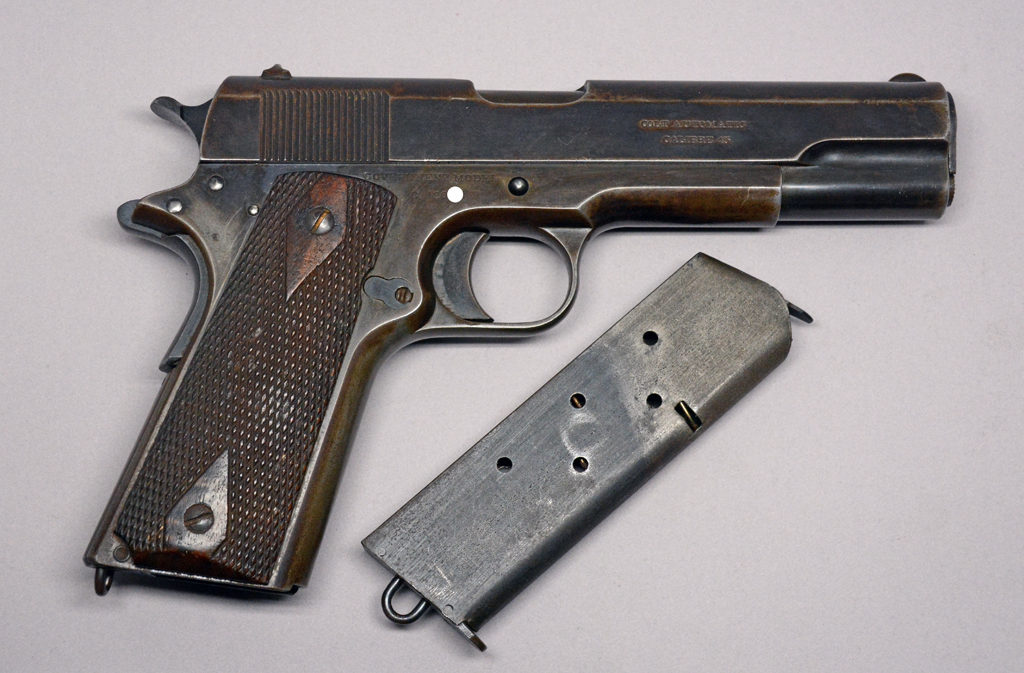
Browning Inglis No. 2 Mk. I* (9 mm) (1944 began issue and is still on issue to the Canadian Forces in 2020!)
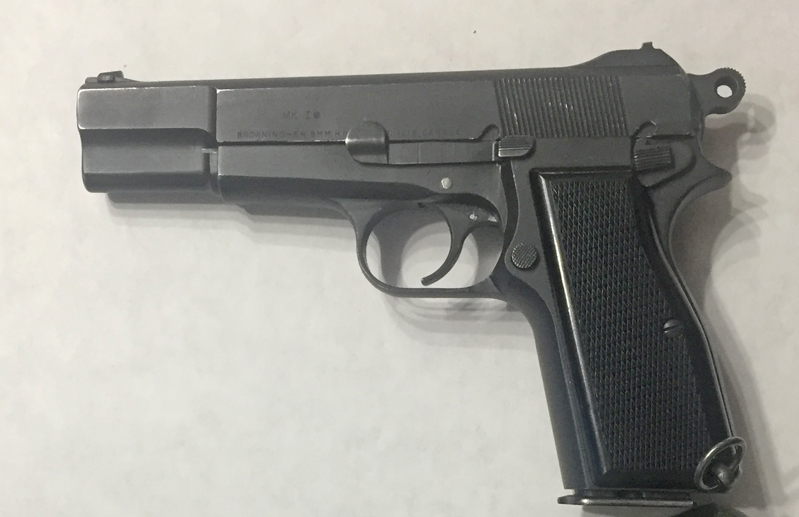
Misc. captured German pistols such as the 9mm Luger and 9mm P-38
Machine Carbines (Submachine-guns)
Thompson Submachine-gun (.45″)
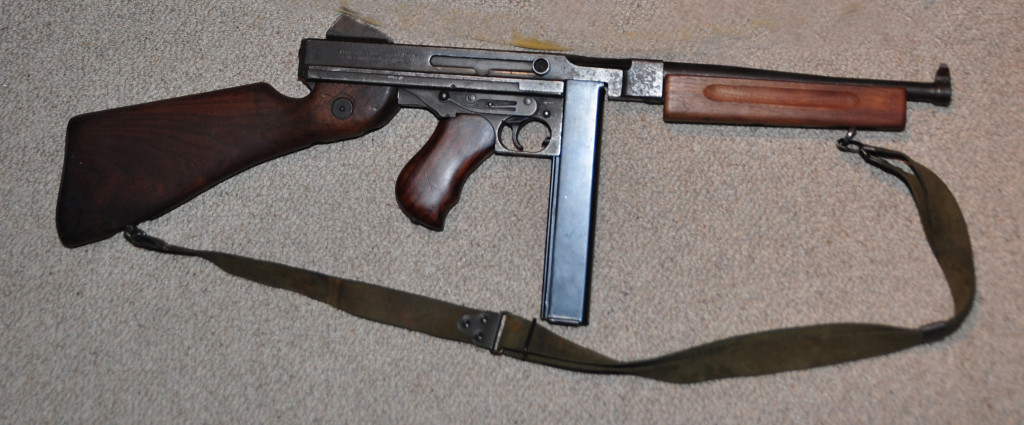
Sten Mk. II (early training only, NOT on operations as far as I know.) (9 mm)
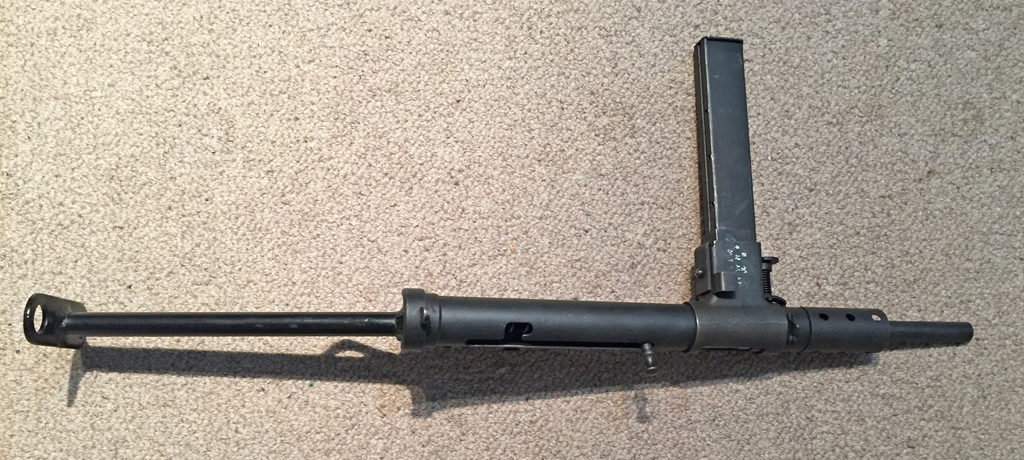
Sten Mk. V (9 mm) with vertical fore grip (for 1945 Operation Varsity, but CO apparently carried a .45″ Thompson)
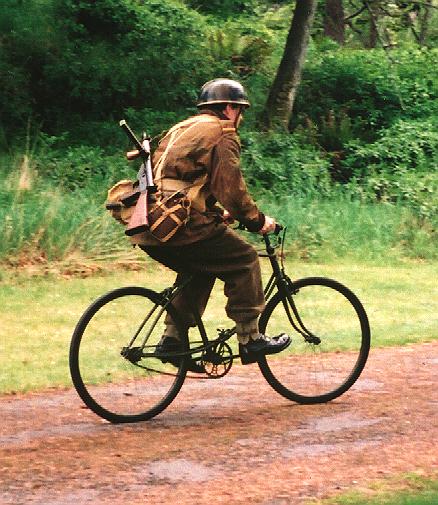
Sten Mk. IIS (one report of silenced Sten being used while battalion was in Germany. Not confirmed yet.) (9 mm)
Captured weapons e.g. German MP-38 / MP-40 (erroneously called the Schmeisser). (9 mm)
The Sten Mk. III was NOT carried by the 1 Cdn Para Bn. as far as I know, and probably not by other airborne troops as they usually carried the Sten Mk. II in earlier training and battles, and the Sten Mk. V on 1944-1945’s operations.
Carbine
The M1A1 carbine was occasionally carried but was not issued as far as we know. (.30 cal carbine). One photo has been seen of a member of 1 Can Para Bn carrying a folding stock M1A1 or M2 carbine.
Machine-guns
Bren Mk. I (.303″) – standard light machine-gun
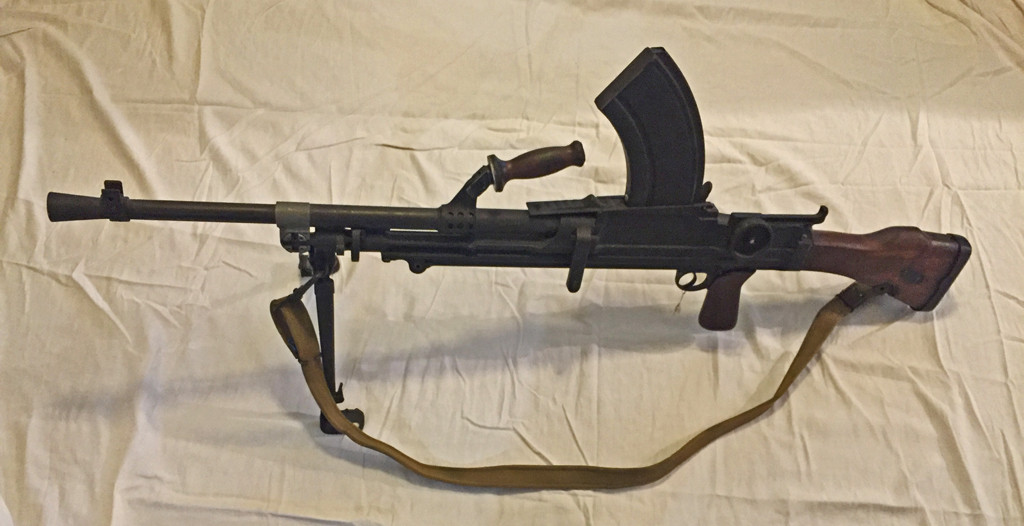
Vickers MMG (.303″) – standard medium machine-gun
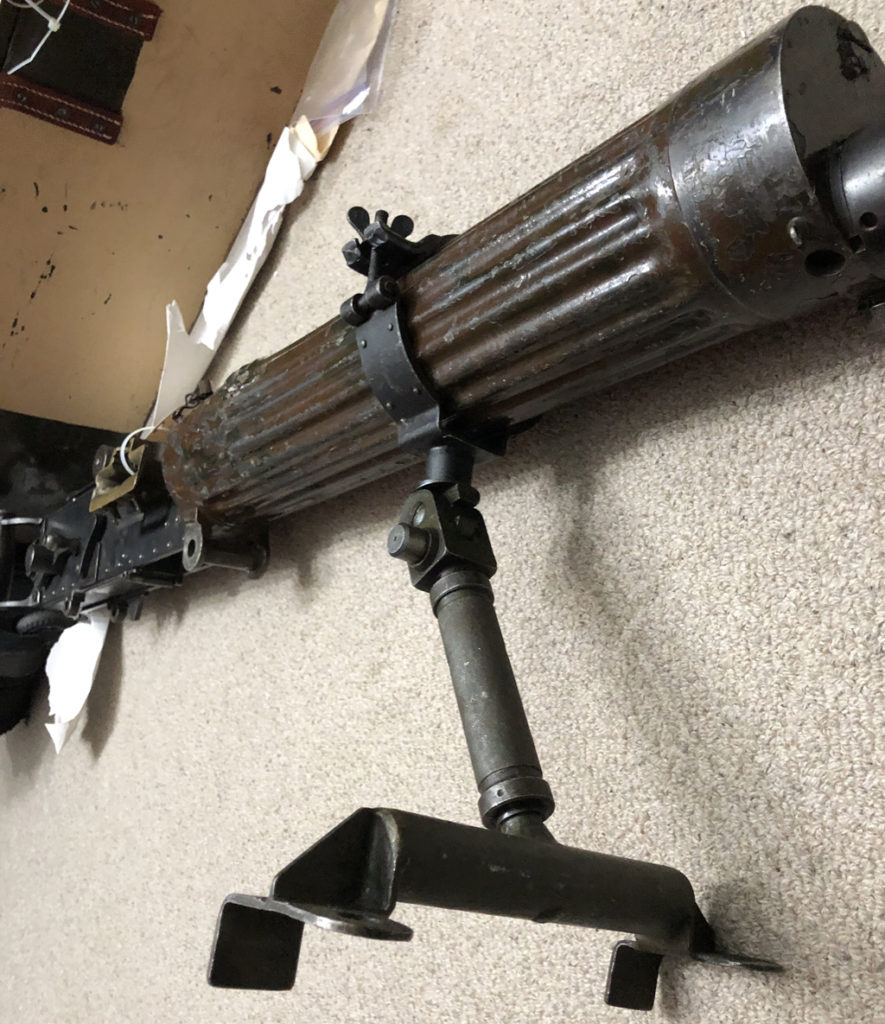
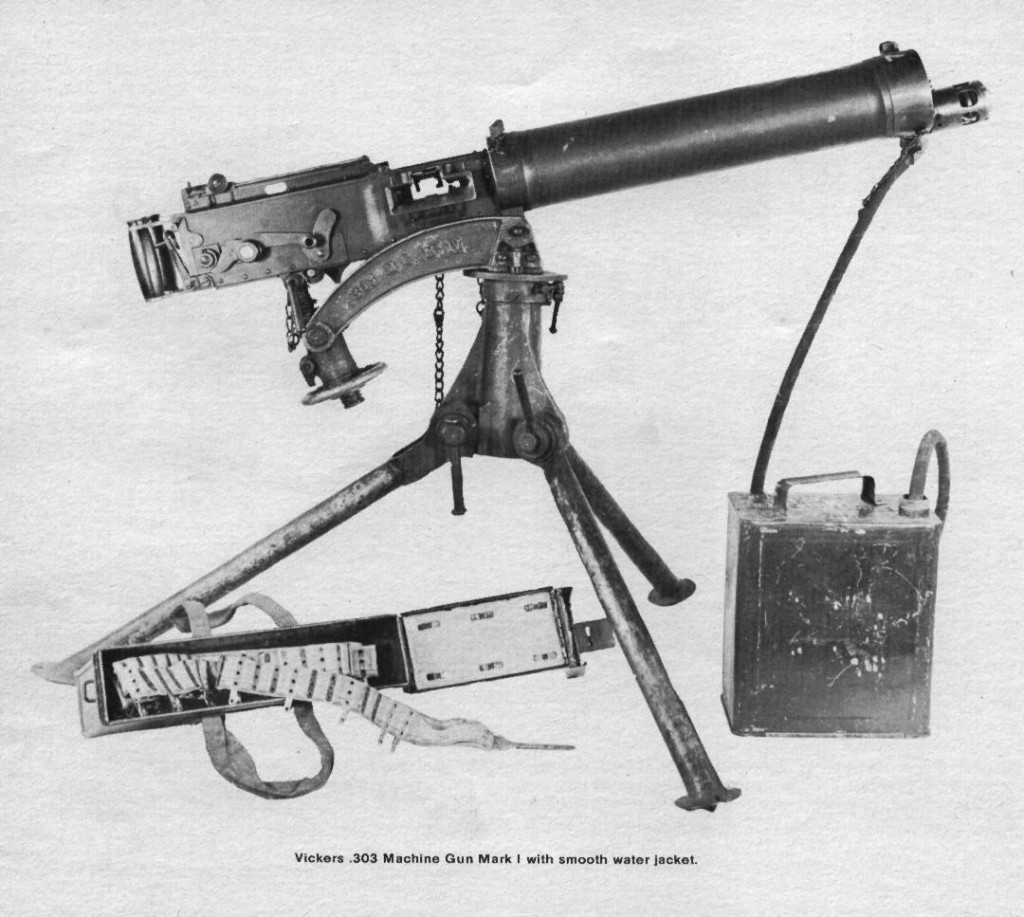
Vickers G. O. (Gas Operated) – This RAF/RCAF etc. weapon was used early in WWII on aircraft. It was later was used by SAS, LRDG and Airborne Recce on jeeps, and by Commando troops with a bipod in 1944. They were NOT used by 1 Cdn Para Bn. as far as I know.
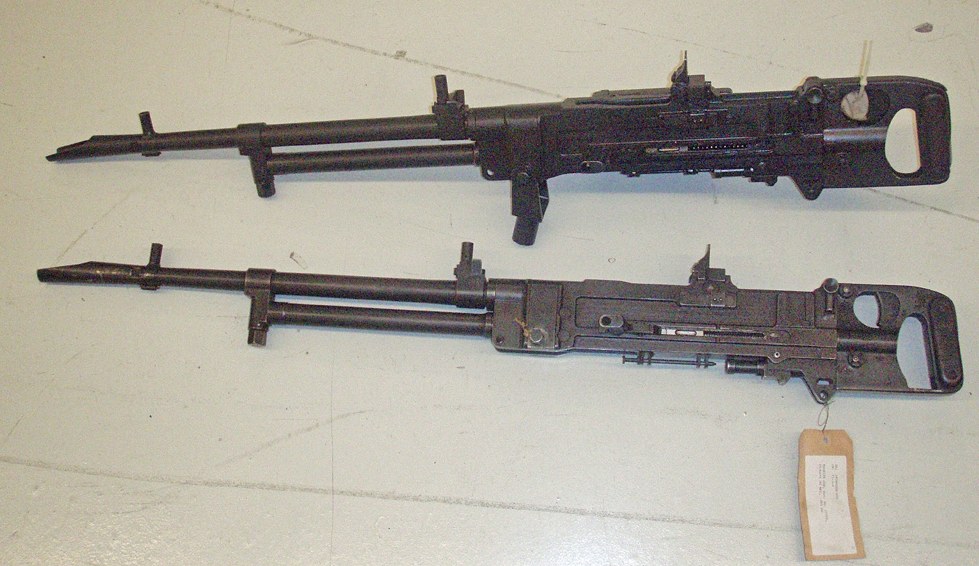
Mortars
- 2″ mortar (airborne model with small arched base plate – like Japanese ‘knee mortar’)
- 3″ mortar – standard medium mortar
Anti-tank Weapons
- Boys Anti-Tank Rifle – (.55″) Probably used in early training.
- Projector Infantry Anti-Tank (PIAT) NOTE: PITA is the Australian designation.
- 6 Pounder (57mm)
- 17 Pounder (3″) (approximately 8.8 cm / 88 mm ) Not used at battalion level as far as I know.
Grenades
- No. 36 M Mk. I
- Gammon
- No. 69
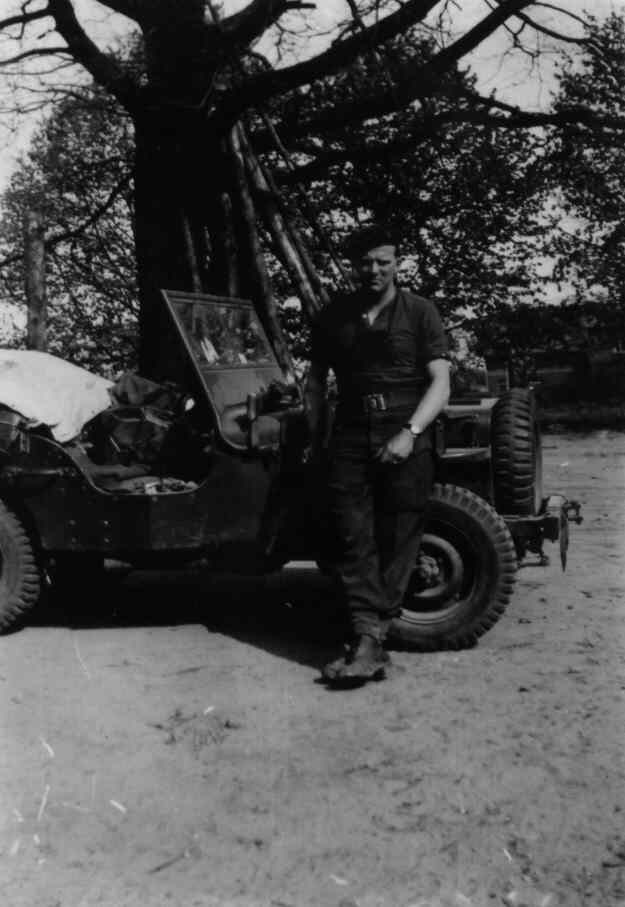
Doug Morrison standing beside an airborne modified jeep, Germany, Spring 1945. A Mo. 4 Mk. I* Lee Enfield rifle is in the weapons clips just in front of the windshield. Photo courtesy of the late Pte. Doug Morrison ex-B Coy, then Vickers Platoon of HQ Coy, 1 Cdn Para Bn. 1942-45.